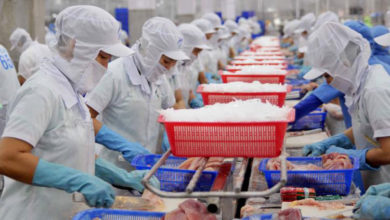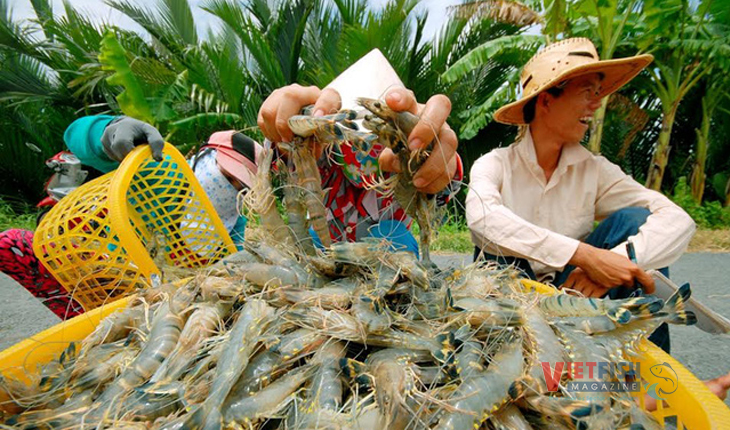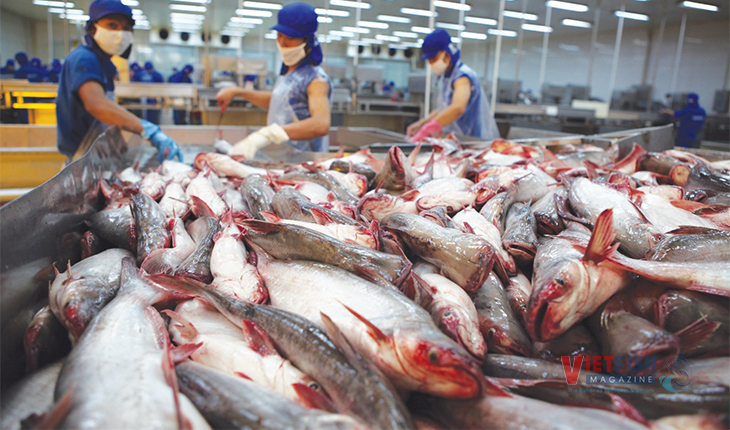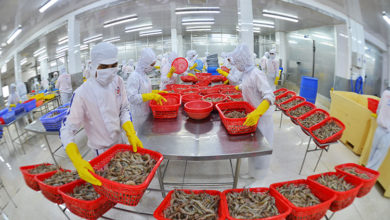Frozen pangasius products continue to be in high demand on the international market.
Approximately 563,000 tons of frozen pangasius were traded globally in 2023, marking a 25% decline from the previous year.
In 2023, global production of pangasius reached 3.1 million tons, reflecting an almost 9% increase compared to 2022. Vietnam remains the world’s leading producer and exporter of pangasius, contributing 52% of the total production and 90% of global pangasius trade.
Approximately 563,000 tons of frozen pangasius were traded globally in 2023, marking a 25% decline from the previous year. Despite a 29% drop from 2022, frozen fillets comprised 84% of imports, while whole frozen pangasius represented 15% of the trade, showing a 3% rise from 2022.
In 2023, several countries saw increases in whole frozen pangasius imports compared to 2022: China (+9%), Colombia (+10%), Uzbekistan (+82%), Qatar (+54%), and South Korea (+5%). Frozen fillet imports also grew in Brazil (+15%), the Philippines (+10%), Singapore (+10%), the UK (+10%), and Germany (+45%). China remained the largest market for both whole and fillet frozen pangasius, accounting for 29% of total imports, followed by the US with 15% and Brazil with 6%.
China imported nearly 163,000 tons of frozen pangasius in 2023, a decrease of 35% from 2022. The US imported almost 92,000 tons, with 91% sourced from Vietnam and the remaining 9% from Thailand and China. Europe imported close to 66,000 tons of frozen pangasius, 91% of which were frozen fillets, and 9% whole frozen fish, with approximately 85% coming from Vietnam.
The UK was the largest importer of frozen pangasius in Europe in 2023, with import volumes showing steady growth. In 2023, nearly 16,000 tons of frozen pangasius from Vietnam were imported into the UK, a 9% increase from 2022. The average import price dropped by 6.06% to USD 3.88/kg in 2023.
In Asia, China led pangasius consumption, making up 56% of imports, followed by Thailand at 11%, the Philippines at 10%, and Singapore at 6%. Consumption of pangasius fillets in the region has surged over the past decade, with the fish commonly sold as “dory” in many Southeast Asian countries. In Malaysia, it is known as “ikan patin” and is typically consumed whole, steamed, or cooked with fermented durian in a spicy broth. Notably, Uzbekistan imported 2,952 tons of frozen pangasius in 2023, a significant 76% increase from 2022.
In Latin America, nearly 90,000 tons of frozen pangasius were imported in 2023, with Brazil, Mexico, and Colombia accounting for 58%. Brazil, Honduras, and Argentina showed positive growth in 2023. Due to strong domestic demand, Brazil remains the largest importer of pangasius in Latin America and is Vietnam’s third-largest market for frozen pangasius.
As the world’s largest producer and exporter of pangasius, Vietnam has seen its products gain popularity in international markets for their delicious taste and competitive pricing. By the end of July 2024, pangasius exports have already surpassed the halfway mark for the year. The export performance in the first seven months of the year has been encouraging, with positive growth in several major markets. However, challenges remain, including political conflicts, trade tensions, the Russia-Ukraine conflict, U.S. anti-dumping tariffs, climate change, disease outbreaks, rising transportation costs, and obstacles in scientific and technological applications.
The global economic downturn has prompted more cautious consumer spending. Pangasius has an edge due to its affordability. Farmers and processors in Vietnam are optimistic about increased demand in the second half of 2024. Pangasius exports in the latter half of the year are expected to surpass USD 1 billion, with total annual export value anticipated to reach approximately USD 2 billion, reflecting nearly a 9% increase.
Recently, a workshop on sustainable aquaculture development, held as part of Vietfish 2024, drew a large audience. Numerous businesses attended to gain insights into the status of Vietnam’s seafood exports, including pangasius, and to discuss pressing issues surrounding the sustainable development of the aquaculture industry.
VFM






